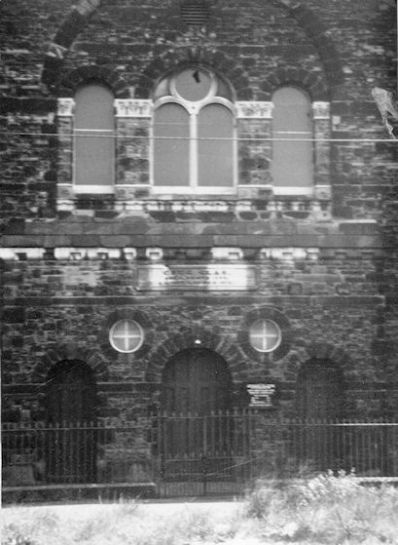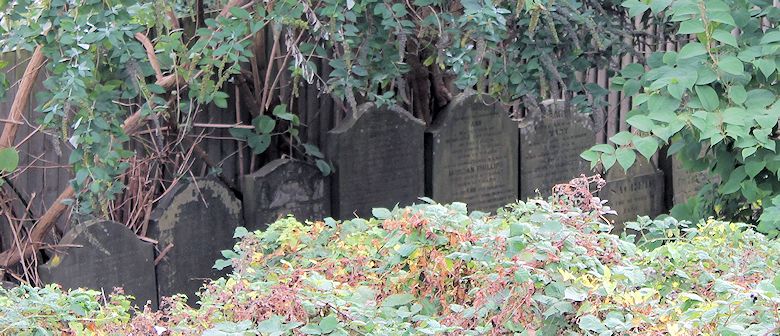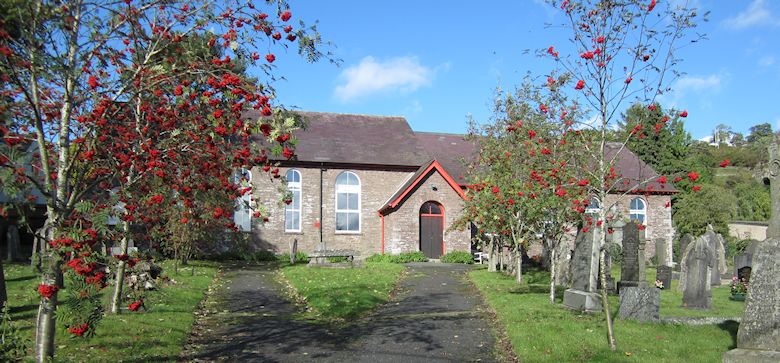For the past week or so, I’ve been preoccupied with the fate of some graves and their monuments in two very different Welsh nonconformist chapel burial yards, one in Swansea and one in Bwlch, near Brecon. In both cases my concern was prompted by the appearance of Public Notices in local newspapers announcing the intention to remove and relocate gravestones and the human remains beneath them.
Crug Glas Chapel, Swansea
Back in October 1998, a Public Notice appeared in the South Wales Evening Post giving details of the intention to remove human remains, tombstones and monuments from the Crug Glas chapel graveyard, Chapel Street, Swansea, in order to build an apartment block:
A few days later, I visited the graveyard, took some photographs, and posted a report on the state of the graveyard on my website as an Images of Wales feature. I revisited the graveyard six years later and found that although no new building work had taken place, the graveyard had been fenced off. I added a follow-up report and new photograph to my webpage.
Then, two weeks ago, almost exactly fifteen years after I first became aware of Crug Glas Chapel and its burial yard, I was contacted by Sue McGuire who had visited my webpage. She wrote:

Old photo of Crug Glas Calvinistic Methodist Chapel, Swansea.
[by kind permission of the West Glamorgan Archive Service]
In 2013, the chapel burial yard is in a desperate state of neglect. Apart from fencing it off, presumably for safety reason, nothing seems to be being done to care for this final resting place for a considerable number of Swansea’s former residents.
Precise details of the demise of Crug Glas Chapel have yet to be revealed. For example, a report by The Royal Commission on Ancient and Historical Monuments of Wales claims that the chapel was demolished in the late 1980s, following a fire, but to date, we have been unable to find any evidence to substantiate this story.Penuel Independent Chapel, Bwlch, Breconshire
Recently, three successive issues of the Brecon and Radnor Express weekly newspaper carried a Public Notice:
 As Bwlch is only a ten-minute drive away, at the first opportunity I grabbed my camera and visited the chapel and took photographs of the chapel building and its burial yard, paying particular attention to the tombstones under threat.
As Bwlch is only a ten-minute drive away, at the first opportunity I grabbed my camera and visited the chapel and took photographs of the chapel building and its burial yard, paying particular attention to the tombstones under threat.
Unlike Crug Glas, Penuel Chapel building is still intact, albeit no longer a place of worship, and the burial yard is well looked after and still in use. The 24 monuments scheduled to be relocated are clustered around the left hand front and side of the chapel. Many of them are visible in the photograph below:
We do not yet know what the eventual fate of the gravestones at Penuel Chapel will be. One wonders whether only the monuments will be relocated, or whether the human remains beneath them will also be disturbed.
Reflections
I’m sure most of those who buried their loved ones in Crug Glas and Penuel Chapel graveyards assumed they would remain there, undisturbed, in perpetuity. Unfortunately this is not so: the Disused Burial Grounds Act 1884 and the Disused Burial Grounds (Amendment) Act 1981 make provision for the lawful movement and relocation of gravestones and disposal of any human remains lying beneath them. Both Acts may be accessed in full on the legislation.gov.uk website.
Graveyards are meant to be peaceful places, places where the recently bereaved can find solace and where later generations can renew family memories. Inscriptions on the monuments tell a great deal about the lives as well as the deaths of the people buried there. Even neglected graveyards have their own sad stories to tell.
But it is disturbing when the wishes and intentions of those who had buried their loved ones seem to be ignored. On the other hand, the pressure on land in the UK is such that burial grounds cannot be overlooked when attempting to find plots on which new homes can be built. Nor can the need for new burials to take place be forgotten. A recent survey by the BBC concluded that almost half of England’s cemeteries could run out of space within the next 20 years.
By recording and making known some of the details of such burial yards, we revive the memories of the men, women and children buried there and bring them to the attention of future generations.







